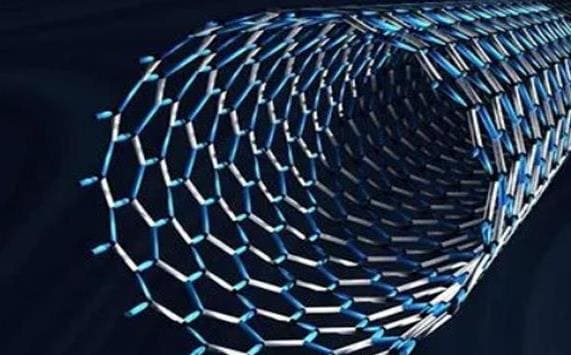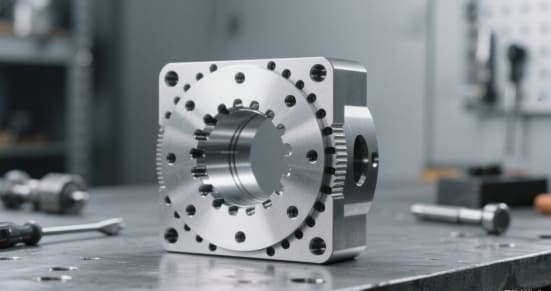Titanium alloys are indispensable materials in modern industry, known for their outstanding mechanical properties and corrosion resistance. They are widely used in various fields, including aerospace, medical, and manufacturing industries. This article delves into the basic properties of titanium alloys, their applications, manufacturing challenges, and future technological trends, helping readers better understand this essential engineering material.
1. Introduction to Titanium Alloys
Titanium alloys are metallic alloys composed of titanium and other elements, offering exceptional strength and lightweight characteristics. They are widely applied in industries that require high strength and low weight. Compared to other alloys, titanium alloys exhibit superior corrosion resistance, especially in seawater and extreme environments.
1.1 Basic Properties of Titanium Alloys
- Strength-to-weight ratio: Titanium alloys are renowned for their high strength and low density, making them especially popular in aerospace and military sectors. Titanium alloys are approximately 60% the weight of steel but offer strength comparable to that of some steels.
- Corrosion resistance: The passive oxide layer that forms on titanium alloys gives them excellent corrosion resistance, particularly in chemical environments, seawater, and high-temperature conditions.
1.2 Classification of Titanium Alloys
- Alpha alloys: Composed mainly of titanium with small amounts of other elements like aluminum and tin, these alloys offer excellent high-temperature performance and toughness, typically used in low to medium-temperature applications.
- Beta alloys: Primarily composed of elements like molybdenum, vanadium, and chromium, beta alloys offer higher strength but lower toughness, suitable for applications that require high load-bearing capabilities.
- Alpha-Beta alloys: Combining the benefits of both alpha and beta alloys, these alloys have high strength and good toughness, widely used in aerospace and automotive manufacturing.
1.3 Key Advantages and Limitations
Advantages: High strength, low weight, corrosion resistance, and high-temperature performance.
Limitations: Higher cost, machining difficulty, especially in cutting and welding, where work hardening can occur.

2. Microstructure and Mechanical Properties of Titanium Alloys
2.1 Microstructure and Phase Transformation
The properties of titanium alloys are significantly influenced by their microstructure. For example, alpha-phase titanium alloys are relatively stable at high temperatures, while beta-phase alloys undergo phase changes that affect their properties. Heat treatment processes are used to modify the microstructure of titanium alloys to achieve desired mechanical properties.
2.2 Major Mechanical Properties
- Tensile strength: Titanium alloys exhibit tensile strength superior to most aluminum alloys, comparable to some steels, making them ideal for applications involving significant tensile loads.
- Fatigue resistance: Titanium alloys maintain excellent fatigue resistance even under prolonged cyclic loading, making them ideal for aerospace applications, where components undergo repeated loading cycles.
2.3 Comparison with Other Structural Metals
| Property | Titanium Alloys | Steel | Aluminum Alloys |
|---|---|---|---|
| Tensile strength | High | High | Medium |
| Fatigue strength | High | Medium | Low |
| Weight | Light | Heavy | Lighter |
| Corrosion resistance | Excellent | Poor | Medium |
| Cost | High | Low | Low |
3. Applications of Titanium Alloys in Aerospace and Military
3.1 Titanium Alloys in Aerospace
Titanium alloys have been used in the aerospace sector since the 1960s. Modern jet engines, airframes, and high-temperature components rely heavily on titanium alloys due to their high strength and resistance to high temperatures. In recent years, the use of titanium alloys in aircraft has increased to reduce overall weight, thereby improving fuel efficiency.
3.2 Military Applications
In the military sector, the bulletproof characteristics and lightweight nature of titanium alloys make them essential materials for armored vehicles, ships, and weaponry. Titanium alloys are used in the manufacture of protective plates, missile casings, and other components, enhancing the survivability of military equipment.
3.3 Weight Reduction and Cost Analysis in Aerospace and Military
Weight reduction: Titanium alloys help reduce the weight of aircraft and military equipment, improving their performance.
Cost: Although titanium alloys are more expensive, their long lifespan and high performance justify the cost in long-term use.
4. Titanium Alloys in Medical Implants: Biocompatibility and Design
4.1 Titanium Alloys in Medical Implants
Ti-6Al-4V is the most commonly used titanium alloy in the medical field due to its excellent biocompatibility. It integrates well with the human skeletal system. Apart from joint replacements, titanium alloys are widely used in dental implants, spinal implants, and other medical devices.
4.2 Biocompatibility Factors
The oxide layer on titanium alloys not only provides corrosion resistance but also promotes good integration with bone tissue, making titanium alloys ideal for implants.
4.3 Surface Modification Techniques
To further enhance the performance of titanium alloys in medical applications, researchers have developed various surface modification techniques such as plasma spraying and anodizing. These techniques improve both the biocompatibility and mechanical properties of titanium alloys.
5. Challenges and Best Practices in Titanium Alloys Manufacturing
5.1 Challenges in Titanium Alloy Machining
Due to the low thermal conductivity and high strength of titanium alloys, machining these materials can generate excessive heat, leading to rapid tool wear and significant work hardening. High-quality tools and specialized machining processes are essential for effective titanium alloy processing.
5.2 Tool Selection and Optimal Cutting Speed
Common tool materials for titanium alloy machining include carbide and diamond-coated tools. Tool selection should be tailored to the specific machining requirements to ensure optimal cutting performance and tool longevity.
5.3 Cooling Strategies for Efficient Production
To prevent overheating during machining, high-pressure cooling fluids and gas cooling methods are often employed. These cooling strategies help reduce tool wear and improve production efficiency.
6. Additive Manufacturing and Corrosion Resistance Innovations
6.1 Additive Manufacturing of Titanium Alloys
Additive manufacturing (3D printing) opens up new possibilities for machining titanium alloys. Using techniques such as Selective Laser Melting (SLM) and Electron Beam Melting (EBM), titanium alloys can be directly manufactured into complex components without the need for traditional molds, particularly for aerospace and medical applications.
6.2 Alloy Development and Emerging Trends
As research into titanium alloys advances, new alloy compositions are continually being developed to improve performance and reduce costs. For example, adding elements like molybdenum (Mo) and aluminum (Al) can significantly enhance the strength and high-temperature resistance of titanium alloys.
6.3 Corrosion Resistance in Harsh Environments
Titanium alloys exhibit excellent corrosion resistance in harsh environments, including seawater, acids, and chlorides, making them ideal for marine and chemical industries. With ongoing technological advancements, the corrosion resistance of titanium alloys is expected to improve further, enabling their use in more extreme environments.
Summary from the author
Titanium alloys play a crucial role in various industries due to their exceptional properties. Whether in aerospace, medical implants, or manufacturing, titanium alloys offer unmatched performance. As technology progresses, the applications of titanium alloys will continue to expand, showcasing their immense potential in the future.



